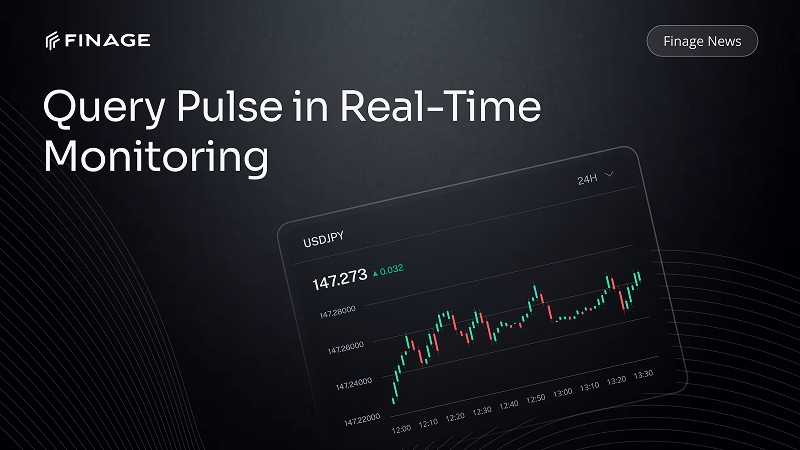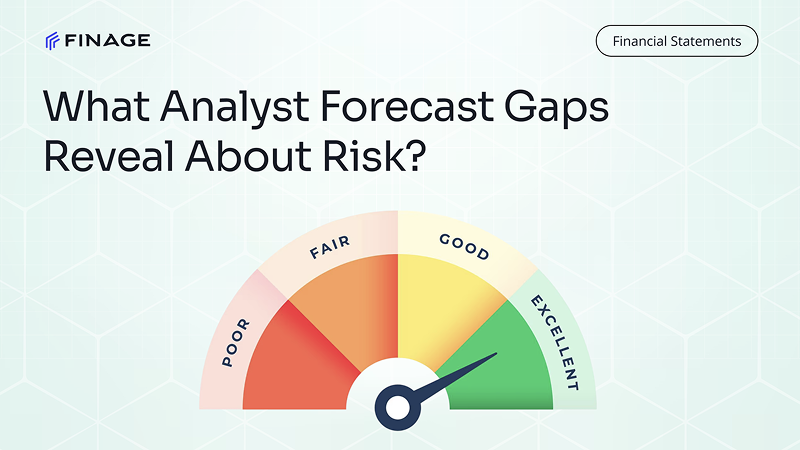Why WebSocket APIs Are a Must-Have for Crypto Exchanges
11 min read • June 24, 2025

Introduction
In crypto markets, milliseconds matter. Traders expect live prices, real-time order books, and seamless execution—without lag or data gaps. Yet many platforms still rely heavily on REST APIs, which weren’t built for the speed and volatility of digital asset trading.
That’s where WebSocket APIs come in. For modern crypto exchanges, WebSockets aren’t just a nice-to-have—they’re a core infrastructure requirement. They enable real-time data delivery, support high-frequency trading, and keep your platform competitive in a crowded landscape.
In this post, we’ll break down why WebSockets are essential for crypto exchanges, where REST falls short, and how platforms can implement real-time data pipelines that are fast, efficient, and scalable.
Table of Contents
- The Real-Time Demands of Crypto Trading
- REST APIs: Where They Start to Break Down
- WebSocket APIs: What Makes Them Ideal for Crypto
- Use Cases for WebSockets in Crypto Exchanges
- Building Reliable and Scalable WebSocket Infrastructure
- WebSocket Authentication and Subscription Management
- How Finage Powers WebSocket Feeds for Crypto Markets
- Final Thoughts: Speed Is the Competitive Edge
1. The Real-Time Demands of Crypto Trading
Crypto markets operate around the clock. There are no trading hours, no closing bells—just constant movement, volatility, and global participation. This non-stop nature has shaped user expectations. Traders now assume platforms will reflect market conditions in real time, down to the millisecond.
Unlike traditional equities or slower-moving financial products, cryptocurrencies often experience sharp price swings within seconds. A sudden shift in sentiment, a large trade, or a tweet from an influencer can move the market instantly. In that environment, delays—even small ones—can lead to poor execution, lost opportunities, and frustrated users.
Speed matters not just for humans watching price charts, but for the systems acting on those changes. A significant portion of crypto trading volume today is driven by automated strategies and bots. These systems react to price changes, order book movements, and volume spikes. If your platform can’t deliver that data fast enough, those systems won’t perform—or they’ll trade elsewhere.
Live data is also central to user experience. Traders expect to see real-time charts, up-to-date balances, and immediate order feedback. When data feels delayed or inconsistent, trust in the platform begins to erode. In a space where alternatives are just a click away, that trust is easy to lose and hard to regain.
For any crypto exchange serious about performance and user experience, real-time infrastructure isn’t optional. It’s a requirement built into the very nature of the market.
2. REST APIs: Where They Start to Break Down
REST APIs are the default choice for many development teams. They’re simple to implement, widely supported, and work well for many use cases—especially when the data doesn’t need to change by the second. But in the context of crypto exchanges, REST quickly shows its limits.
The biggest issue is timing. REST APIs operate through a request-response model. This means your app must ask for data, wait for a reply, and then decide what to do next. In real-time trading, that pause can be a problem. Crypto prices can shift multiple times between each request, especially during periods of volatility.
Another challenge is how REST APIs handle load. Exchanges often set strict rate limits on REST endpoints to protect their servers. These limits can get in the way when a user—or a trading bot—needs to monitor many trading pairs at once. Requests get throttled, responses slow down, and some data never arrives.
This becomes especially clear in high-frequency environments. Bots that depend on up-to-date order books or price movements struggle to keep up using REST alone. The data they’re acting on is already outdated by the time it’s processed.
REST is also a poor fit for event-driven workflows. There’s no way to say “notify me when X happens.” Instead, your system has to keep asking over and over. That creates unnecessary traffic, increases latency, and wastes resources.
To summarize where REST APIs fall short in crypto exchange scenarios:
- They introduce latency due to the constant request-response cycle.
- They struggle under rate limits, especially for large-volume or multi-pair traders.
- They don’t support real-time event triggers, making automation harder to implement.
REST still has its place. It's great for account queries, historical data, or static settings. But when the market moves quickly—and you need to move with it—it’s no longer enough on its own.
3. WebSocket APIs: What Makes Them Ideal for Crypto
WebSocket APIs were designed for exactly the kind of environment crypto trading creates: high-frequency, real-time, and constantly changing. Unlike REST, WebSocket connections remain open, allowing the server to push updates as soon as events occur—no polling required.
This real-time data flow is crucial for traders who need to see price movements the moment they happen. It also helps maintain a live view of the order book, so users can respond to shifting liquidity or market depth without delay.
Another key benefit is efficiency. A single WebSocket connection can handle multiple data channels—tickers, trades, order books, and more—without the need to repeatedly initiate and close connections. This keeps bandwidth usage low and server strain minimal.
For crypto exchanges, WebSockets enable core features like:
- Live price streaming with millisecond-level updates
- Real-time order book changes, including bid/ask adjustments and fills
- Instant notifications for trade executions or account events
- Responsive charting and technical analysis tools based on true market conditions
Because the data is pushed to the client the moment it changes, the user experience becomes significantly faster and more fluid. There’s no guesswork, no polling delays, and no missing ticks.
This is especially important for mobile users or low-latency trading systems, where every millisecond counts. Whether the end user is a retail trader checking prices on the go or a market-making bot scanning for arbitrage, WebSocket APIs provide the speed and reliability they depend on.
WebSocket infrastructure does require more planning than REST—but for any exchange aiming to compete at the level users expect today, it’s no longer optional.
4. Use Cases for WebSockets in Crypto Exchanges
WebSocket APIs aren’t just a technical upgrade—they enable the features traders expect to use every day. For crypto exchanges, they unlock functionality that would otherwise be limited or impossible to deliver in real time.
Perhaps the most obvious use case is streaming price data. Traders want to see exact price movements as they happen—not after a delay. With WebSockets, a user’s chart updates instantly when a trade occurs, allowing for accurate technical analysis and better decision-making.
Another critical area is the order book. REST APIs provide snapshots of bid and ask levels, but they become outdated almost immediately. WebSockets allow the exchange to broadcast every change in the book: new orders, cancellations, partial fills, and complete executions. This means users and bots can respond to the true market state, not an approximation.
Execution notifications are also made possible through WebSocket channels. When a user places an order, they expect immediate feedback. WebSockets allow for that, delivering order status updates, confirmations, and fill details without requiring constant status checks.
Here are a few additional use cases where WebSockets play a central role:
- Real-time trade tickers for active instruments
- Live PnL and position tracking as market values shift
- Streaming alerts for price triggers or unusual volume
- Interactive dashboards and visualizations that reflect true market activity
In each of these cases, the key is immediacy. REST simply can't deliver the level of responsiveness that modern crypto platforms demand. Whether you're targeting day traders, institutions, or bot-driven users, real-time data flow is essential for delivering a reliable experience.
5. Building Reliable and Scalable WebSocket Infrastructure
Offering WebSocket APIs is only part of the equation. Delivering consistent, high-quality real-time data at scale requires a well-planned infrastructure. Crypto exchanges can’t afford downtime, lag, or data loss—especially during periods of high volatility when trading volume spikes.
The first challenge is connection stability. Each client maintains a persistent link to your servers, and those connections must be carefully managed. If they drop or time out frequently, the entire real-time experience breaks down. That’s why proper load balancing, session management, and timeout handling are essential from the start.
Scalability is another major factor. As your exchange grows, thousands of clients will connect simultaneously. A scalable architecture needs to support:
- Efficient message routing across multiple markets and channels
- Intelligent subscription filtering to reduce noise
- Horizontal scaling across multiple servers or data centers
Equally important is data integrity. Your WebSocket stream must deliver updates in the right order and without duplication. For order books and trades, this is especially critical—users depend on accurate sequencing to make informed decisions. Delays, gaps, or misordered messages can damage user trust and, in the case of institutional clients, disrupt algorithmic strategies.
Monitoring also plays a role. You need visibility into dropped connections, latencies, and message queues so your team can proactively address issues. Logging and metrics should be baked into every layer of the system.
Reliability in WebSocket delivery doesn’t happen by accident—it’s the result of careful design, rigorous testing, and continuous performance optimization.
6. WebSocket Authentication and Subscription Management
Managing real-time data access isn’t just about speed—it’s also about control. For crypto exchanges, authentication and subscription logic are critical for ensuring data is secure, scalable, and properly segmented by user roles or permissions.
Most exchanges use token-based authentication for WebSocket access. This often involves a client first requesting a session token via REST, then using that token to authenticate the WebSocket connection. This process helps verify identity, enforce permissions, and prevent unauthorized access to premium or account-specific data.
Once authenticated, users subscribe to specific data streams. These could include market tickers, order book updates, or personal account events like order fills. A well-designed subscription model allows clients to specify exactly which instruments or channels they want, minimizing bandwidth usage and improving overall system efficiency.
There are several key reasons to invest in robust subscription management:
- It helps protect system resources by avoiding unnecessary data delivery
- It ensures that each user only receives the data they are entitled to
- It allows users to dynamically adjust their subscriptions based on app activity
For example, a user viewing only the BTC/USDT pair shouldn’t receive updates for ETH/USDT unless they request it. This logic improves both performance and user experience.
Subscription systems should also support resubscription logic in case of connection loss. If a client disconnects and reconnects, the server should recognize the session and restore the previous state without forcing a complete reload. This makes apps more resilient to network issues and improves continuity during volatile trading periods.
WebSocket access isn’t just a firehose—it’s a selective stream that must be properly secured and managed at scale.
7. How Finage Powers WebSocket Feeds for Crypto Markets
At Finage, real-time market data delivery is built from the ground up with performance, stability, and scalability in mind. The WebSocket infrastructure behind Finage’s crypto feeds is designed specifically to meet the demands of exchanges, trading platforms, and algorithmic systems that depend on sub-second data accuracy.
Finage WebSocket APIs provide direct access to live trade ticks, full order book depth, and aggregated market movements. The data is sourced from major crypto exchanges, normalized into a consistent structure, and delivered with minimal latency. This helps developers build applications that respond instantly to market shifts—without worrying about inconsistent formats or gaps between feeds.
One of the key advantages is the ease of use. The Finage WebSocket system supports simple subscription syntax, so clients can easily subscribe to the instruments or pairs they need without complex logic. Authentication is handled securely using session tokens, and connection limits are well-documented to support both small apps and enterprise-scale deployments.
Behind the scenes, Finage continuously monitors data delivery for timing accuracy, packet loss, and message sequence. This ensures that even during high-volume events—such as major market announcements or large liquidation events—clients continue receiving data with the consistency they expect.
Developers can also rely on the documentation provided in the Finage WebSocket API guide, which outlines all available endpoints, authentication steps, and data formats in a clear, implementation-ready format. Updates and improvements are made frequently, and the infrastructure is tested to scale with increasing demand across regions and asset types.
By combining high-speed streaming, smart subscription management, and a clean developer experience, Finage makes it easier for crypto platforms to offer real-time capabilities without building their own data infrastructure from scratch.
8. Final Thoughts – Real-Time Is the New Minimum
In the crypto space, responsiveness isn’t just a competitive edge it’s the baseline expectation. Whether you're running a global exchange or building tools for professional traders, delivering fast, accurate, and stable data is no longer optional. It's the foundation users depend on.
WebSocket APIs are the only way to meet these expectations at scale. They enable instant updates, reduce infrastructure strain, and open the door for truly interactive platforms. REST APIs still have their place for historical data and static queries, but they can’t match the immediacy today’s trading environment demands.
For developers, WebSockets offer a better foundation to build smarter, more reactive systems. And for product teams, they create a smoother user experience—something that directly impacts trust, engagement, and long-term growth.
Finage’s WebSocket solutions are built with these realities in mind. By providing low-latency data streams, clear documentation, and scalable architecture, Finage allows teams to focus on innovation instead of infrastructure.
To explore the crypto WebSocket API in detail
You can get your Real-Time and Historical Cryptocurrency Data with a free Crypto Data API key.
Build with us today!
Claim Your Free API Key Today
Access stock, forex and crypto market data with a free API key—no credit card required.

Stay Informed, Stay Ahead
Finage Blog: Data-Driven Insights & Ideas
Discover company news, announcements, updates, guides and more

.png)
